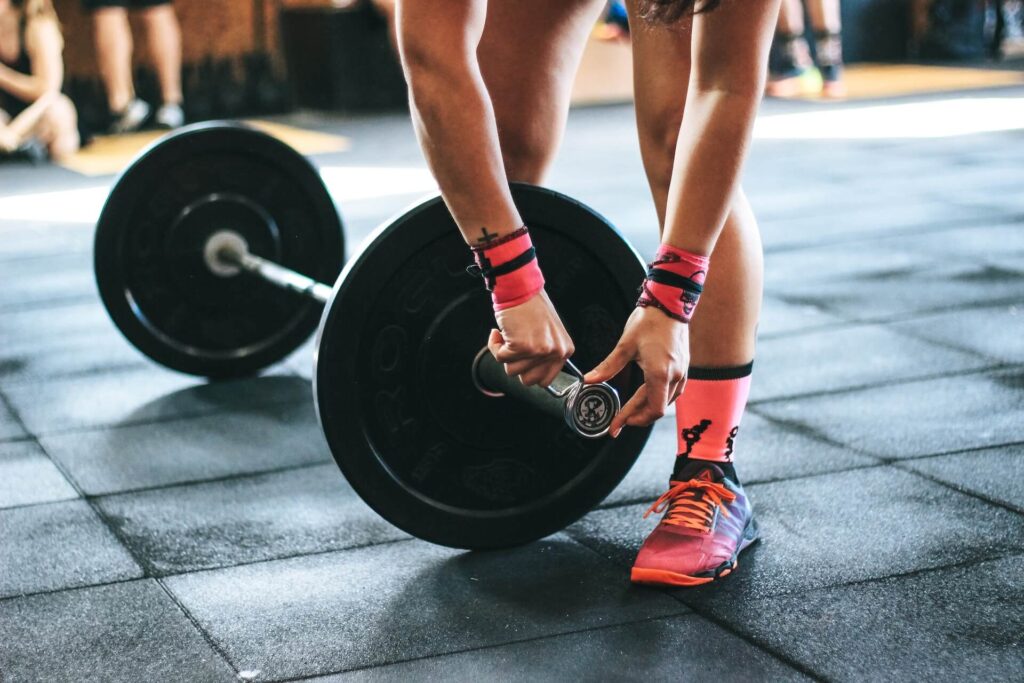Dumbbells are a versatile and effective tool for strength training, providing countless benefits for both beginners and seasoned fitness enthusiasts. They offer a wide range of exercises that target various muscle groups, helping you build strength, improve muscle tone, and increase overall fitness. However, without proper technique and precautions, working with dumbbells can lead to injuries that can hinder your progress and put you on the sidelines.
In this comprehensive guide, we will explore essential safety tips to help you avoid injuries and maximize your results during your dumbbell workouts. So, let’s dive in and learn how to lift smarter and safer!
Warm-Up and Stretching
Before you start your dumbbell workout, it’s crucial to warm up your muscles and prepare your body for the upcoming intensity. Engaging in a dynamic warm-up routine is an excellent way to increase blood flow, raise your body temperature, and activate the muscles you’ll be using during your workout. Consider including exercises like jogging, jumping jacks, or arm swings to get your heart rate up and your body primed for action.
Additionally, performing a thorough stretching routine focusing on the major muscle groups you’ll be targeting during your workout can further enhance flexibility and reduce the risk of injury. Stretching helps improve your range of motion and allows your muscles to work more efficiently during exercises.
Start with the Appropriate Weight
Choosing the right weight for your dumbbell exercises is vital to ensure safety and effectiveness. Beginners should start with lighter weights to focus on proper form and technique. It’s important to master the correct movement patterns before progressing to heavier weights. Gradually increasing the weight as you become more comfortable and your strength improves is a wise approach.
On the other hand, experienced lifters should select weights that challenge their muscles without compromising their form. It’s tempting to reach for the heaviest dumbbells available, but using excessively heavy weights can increase the risk of injury and reduce the effectiveness of your workout.
Maintain Proper Form
Maintaining proper form throughout your dumbbell exercises is crucial for preventing injuries and maximizing results. By paying attention to your technique, you engage the correct muscles, reduce strain on joints, and ensure optimal muscle activation. Whether you’re performing dumbbell hammer curls, bicep curls, or shoulder presses ensuring proper posture and smooth movements is essential for safe and effective workouts. Here are some key pointers to keep in mind:
• Keep your head and neck aligned with the rest of your spine. Avoid tucking your chin or looking up during exercises.
• Do not lock out your elbows or knees while working with weights. Allowing a slight bend in the joints can help reduce stress on the connective tissues.
• Engage your core muscles throughout each exercise to stabilize your body and help prevent excessive strain on your joints.
• Avoid any jerky or uncontrolled movements with the weights. Make sure to keep your movements smooth and controlled for optimum safety and results.
By focusing on maintaining proper form, you not only minimize the risk of injuries but also ensure that you’re getting the most out of each exercise.
Be Mindful of Joint Stress
While dumbbells can be great for strength training, they can also place stress on your joints if not used correctly. It’s crucial to pay attention to your joint alignment and avoid hyperextending or locking out your joints during exercises. Hyperextension occurs when a joint extends beyond its normal range of motion, and it can put unnecessary strain on ligaments, tendons, and joint structures. To prevent joint stress, maintain a controlled and smooth movement throughout each exercise. Focus on the target muscle groups rather than relying on momentum or jerky motions. By being mindful of joint stress, you can protect your joints and reduce the risk of discomfort or long-term issues.
Use a Spotter
If you’re attempting heavier dumbbell exercises like bench presses or overhead presses, having a spotter can provide an extra layer of safety. A spotter is a person who can assist you during exercises, ensuring that you can safely complete your repetitions. They can help you maintain proper form, offer guidance, and assist you in case you struggle to complete a repetition or need assistance in putting the weights back on the rack. Working with a spotter can give you the confidence to push your limits while minimizing the risk of accidents. If a spotter is not available, it’s essential to choose weights that you can handle safely on your own without compromising your form.
Rest and Recovery
While staying consistent with your dumbbell workouts is essential, it’s equally important to prioritize rest and recovery. Intense exercise creates micro-tears in your muscles, and rest allows your body to repair and grow stronger. Without sufficient rest, you increase the risk of overuse injuries and hinder your progress. Aim for at least one to two days of rest per week, allowing your muscles to recover and adapt to the stress you put them through. Listen to your body’s signals and pay attention to any persistent pain or discomfort.
If you experience such symptoms, give yourself ample time to recover before returning to your routine. Proper rest and recovery are key components of a well-rounded fitness program and contribute to long-term success.

By following these dumbbell safety tips, you can minimize the risk of injuries and enhance the effectiveness of your strength training. Warming up, starting with appropriate weights, maintaining proper form, progressing gradually, being mindful of joint stress, considering the use of a spotter for heavier exercises, and prioritizing rest and recovery are all essential aspects of a safe and effective dumbbell workout routine.
Incorporate these precautions into your training regimen, and you’ll be on your way to maximizing your results and achieving your fitness goals safely. Embrace the power of dumbbell training, and lift smarter, stronger, and injury-free! Remember, your health and safety should always be the top priority in your fitness journey.








